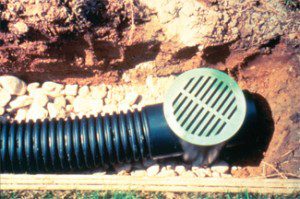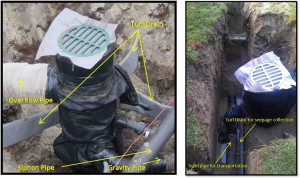This is the second of a series of articles about installation mistakes that can actually cause your drainage problems to worsen instead of improve (Part I). A common practice in the golf course industry is the use of perforated pipe for transporting water. Every drainage system has two major functions; collection and transportation of water. 
Collection can either be done by an open inlet collecting surface water, or a seepage line collecting water that is trapped on the profile. Many superintendents feel that if they use perforated pipe for their transportation lines, it can also collect their seepage water. Makes sense right? Maybe not. When a perforated line is used to transport water from a surface inlet, the water traveling through the pipe will first leave the pipe and enter the gravel envelope. The water that is then in the gravel envelope will saturate the surrounding soil wall until it has reached field capacity. Once the saturation level is between field capacity and saturation, the water will try to move back into the perforated pipe. Much of this water, however, would not even be necessary to collect if it wasn’t put there as the result of being loss through the perforations.
What is the answer? Run two pipes? YES. Here you will see field pictures representing what is standard procedure in our drainage designs.
The 4” solid corrugated pipe is used to transport water from the first basin on the system to the exit point. Placed in the same trench is Turf Drain. This meets the objective of using one trench line to perform two functions, without the loss of water that occurs with the use of perforated pipe.

